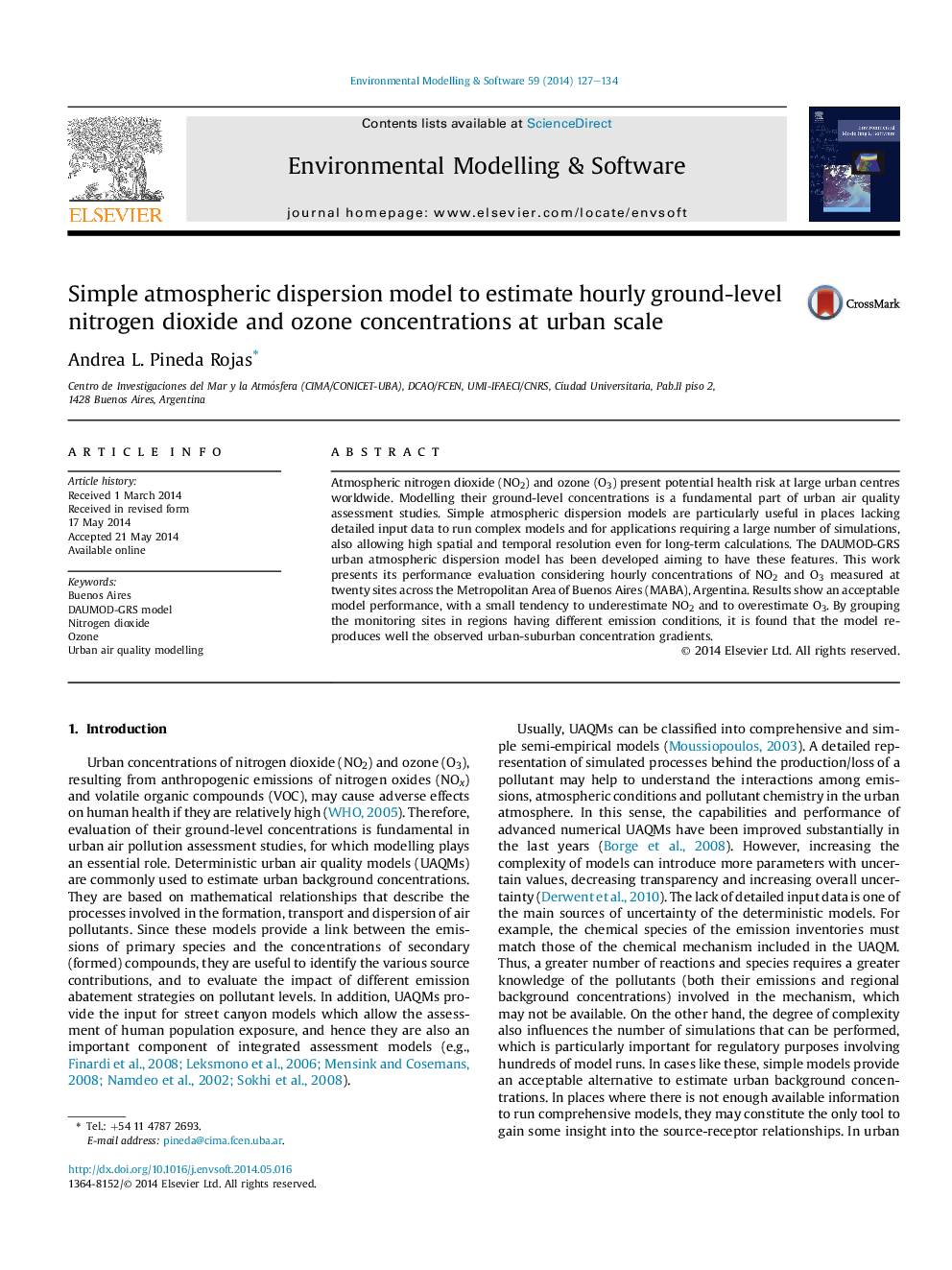| Article ID | Journal | Published Year | Pages | File Type |
|---|---|---|---|---|
| 6963797 | Environmental Modelling & Software | 2014 | 8 Pages |
Abstract
Atmospheric nitrogen dioxide (NO2) and ozone (O3) present potential health risk at large urban centres worldwide. Modelling their ground-level concentrations is a fundamental part of urban air quality assessment studies. Simple atmospheric dispersion models are particularly useful in places lacking detailed input data to run complex models and for applications requiring a large number of simulations, also allowing high spatial and temporal resolution even for long-term calculations. The DAUMOD-GRS urban atmospheric dispersion model has been developed aiming to have these features. This work presents its performance evaluation considering hourly concentrations of NO2 and O3 measured at twenty sites across the Metropolitan Area of Buenos Aires (MABA), Argentina. Results show an acceptable model performance, with a small tendency to underestimate NO2 and to overestimate O3. By grouping the monitoring sites in regions having different emission conditions, it is found that the model reproduces well the observed urban-suburban concentration gradients.
Keywords
Related Topics
Physical Sciences and Engineering
Computer Science
Software
Authors
Andrea L. Pineda Rojas,
